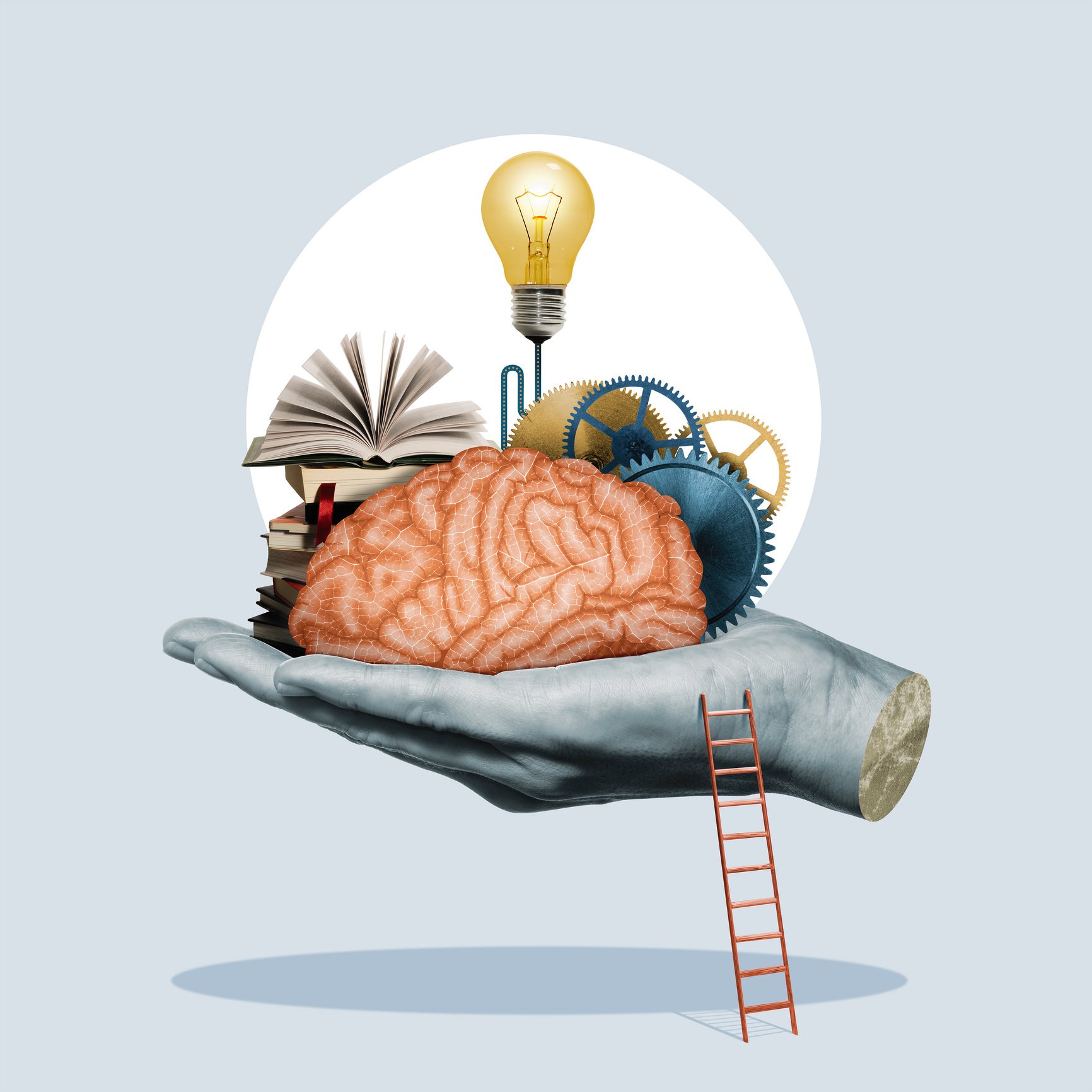How to Incorporate AI into Marketing Content Creation

AI Can Be A Great Tool for Writing B2B Content. Here’s How to Do It Right
What you will learn:
-
How AI is changing B2B marketing
-
Four places where human oversight is essential
-
Five tips for how to use AI for technical writing
I recently completed a short class about how technical writers can use artificial intelligence (AI) tools. Good thing that it WAS a short class because it feels as though almost anything I learn about AI will be replaced by something new that represents the “latest and greatest” in AI tools before the year’s end.
One of the more amusing exercises was to ask the AI generator to rewrite a piece of content using a different voice, such as J.K. Rowling or Mark Twain. I believe I chose Ernest Hemingway. While it was fun, I cannot picture an occasion when I would implement this practice on behalf of any clients. And I still prefer the British bard’s lyrical touch over AI-generated alternative suggestions.
Is It Shakespeare?
“A rose by any other name would smell as sweet.” ~ Shakespeare. Can ChatGPT improve on Shakespeare himself? I decided to try:
-
"A rose, no matter the label, would retain its scent."
-
"Whatever name you give a rose, its fragrance won’t change."
-
"Even with a different name, a rose's sweetness remains."
-
"Name it what you will, a rose's essence is unchanged."
-
"The sweetness of a rose isn’t tied to its title." …. ~ChatGPT
I think we can all agree it’s missing quite a bit.
AI Will Change How We Do B2B Marketing
That’s one of the key takeaways from our agency’s experience in using ChatGPT for B2B writing – it’s a good 80% starting point, but at the end of the day, it’s always missing something. And that’s important for marketers to keep in mind.
Specifically, while ChatGPT and other AI content generators do a great job of generating copy, it can be redundant, poorly organized, and is of course, totally lacking in any comparative marketing messaging or competitive advantages. (Read our earlier blog on how to improve AI-generated content). While we use ChatGPT and other AI content tools at GGC, we always understand that AI-generated content is missing a good marketing editor to polish and shape the final product.
One recent article lists the top 100 AI tools of 2023 from among the thousands introduced this year since January. Under the category “Writing and Content Creation,” one tool after another is filled with golden promises to complete tasks in a “frictionless” manner or “swiftly transforming” drab content into more engaging articles and blog posts “in seconds.” Other articles predict that 90% of all online content will be AI generated by 2025 (although we expect that Google will eventually push back on AI-content-dominant websites when determining search rankings).
While generative AI can create content across all media, from text to video. It is new, it is exciting, it also poses a challenge. How and when should these generative AI tools be incorporated into marketing efforts?
Focusing solely on written content creation, here are a few of my thoughts after almost daily use of one of the predominant models, ChatGPT.
AI Content Creation Needs Human Oversight
The creative process involves intangible yet valuable human traits that AI is currently unable to duplicate, such as:
-
Intuition, nuance, and emotion
-
Cultural context related to the audience
-
Interpreting, curating, and contextualizing
There are a few steps necessary when using an AI generator to create content:
Prompt engineering: This is a fancy term for learning what questions to ask, how to phrase questions, and how to continue massaging the question to arrive at the answer you need for the task at hand. This means that the person who has working knowledge of their subject matter will have a distinct advantage over someone stabbing in the dark.
It also means that someone trained and practiced in journalism, someone who has learned how and which questions to ask during their career, will be able to prompt the AI generator to produce the most useful information. The more specific the prompt is related to the topic and desired outcome, the better the product.
Fact checking: It is an established fact that AI-generated copy today will contain inaccurate information. This highlights the necessity of having an informed inquiry or prompt fed to the AI generation tool. In addition, a person familiar with the topic should peruse the text once it is produced. Always ask the AI tool to cite sources so you can evaluate the source of the information.
Differentiation: My sympathies to all the high school teachers assigning essays to their students. Having to read a classroom full of AI-generated content on the same theme or topic would be tedious in the extreme. Ask vague questions or ask an AI tool a similar question 100 times, and the language will be mixed up a bit but remarkably similar from one piece to the next. Differentiated copy is most likely to capture the audience’s attention.
Also, the proper combination of search engine-ranked keywords along with unique, original copy will produce a better blog post, article, or email. In my experience, when asked to craft a blog post, the AI-generated introductory paragraph always sounds the same, regardless of the topic.
Distinct: As mentioned earlier, companies need to highlight for their potential customers features and benefits that supply an advantage. They need to be able to answer the question, “Why on earth would you spend your money with us?” Within the B2B sphere, this is often best served by demonstrating subject mastery or superiority through commentary or a perspective from a subject matter expert (SME). Case studies also help provide practical, real-world examples of successful implementation of a company’s technology.
Generally, guidance and information from an SME should form the core of any generated content, such as blogs or articles. The same SME should also fact-check any AI-generated content used to supplement the piece. Imagine ChatGPT creating content about a product or industry that is inaccurate. We have had this happen before, which drives the point that you must carefully review everything.
How to Use AI for B2B Technical Writing
Knowing the shortfalls begs the question, where and how should I use AI-generated content? Because there is no doubt it serves many useful purposes, and it has several benefits to offer the content writing team.
-
Breaking through writer’s block. Who hasn’t had the experience of staring at a blank screen at a work writing assignment and, on occasion, not having any idea where to begin? When AI-generated text starts flowing, it might not exactly suit the specifications. Still, it can spark ideas that will get you headed in the right direction or provide a platform on which to begin.
-
Background research. AI tools are great for finding historical information or general facts to help fill in the background information that explains basic concepts. For example, when writing a series of posts that look at different angles of a common material, such as high-performance thermoplastics, I used the AI tool to help dig up the history or most common uses of several types of these plastics. I always back up the information with my own outside search to verify that it is correct.
-
Summarizing transcripts or reports. An interview with subject matter experts yields the information necessary to write relevant text. The topic and interviewee could yield a firehose-level stream of information, and AI tools can sort and sift that information in seconds to help find the most relevant passages for inclusion in an article or blog post.
Note that it might take seconds for a short transcript. I had a project recently with 15 pages of transcript. It took more than an hour to feed the information into ChatGPT a few pages at a time and quite a bit of massaging to obtain the result I needed. It still shaved time off the project, but it required more significant time and skill.
Similarly, AI can help summarize reports and condense that information into a few sentences. These summaries still require fact checking and editing, but they are real time savers.
-
Leverage existing content. The concept of an “evergreen” topic has served as a sales tool in the publishing world for many years. Every writer has repurposed articles to help clients stretch their budgets and refresh or revitalize relevant content. AI tools can more swiftly reorganize this information to help create fresh content pieces using older yet relevant information.
-
Generate lists of questions. My background in journalism has provided me with decades of experience interviewing subjects for magazine articles, press releases, trade show backgrounders, and much more. Yet, when I’m faced with an unfamiliar topic, AI can help me develop prompts for SME communications and help generate relevant questions that can move the conversation along the right lines.
With more than 7000 AI tools introduced in the past nine months, any blog discussing AI’s possibilities could ramble on for days. The sheer numbers point out the necessity of stepping back, taking a deep breath, and logically harnessing the power of AI while retaining the human element.
Go ahead and use AI in creating your content, but be sure to fact-check carefully, add a voice of authority from your in-house subject matter expert, and find ways to infuse it with anecdotes, analogies, or relevant industry data. This will provide the authenticity, context, and creativity to create content that will resonate with an audience that remains all too human.






